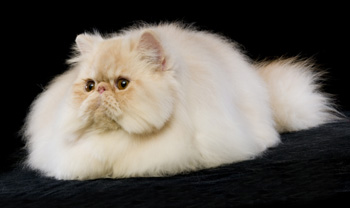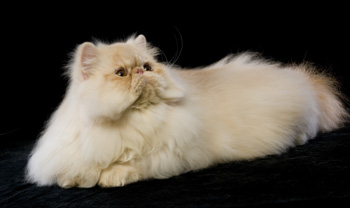Persian Cats Breeding in Rome
domus aventina by francesco di pietro
Since childhood, Francesco Di Pietro has always had a great passion for animals: if he was entrusted with a puppy, he was able to look after it with affection and love.
For his twelve years his mother, who loves all animals as much as he does, gave him a splendid black and white Persian Van, and so Francesco began to participate in his first exhibitions, with numerous successes.
After a short time, he bought a female and from there to have the first puppies was a very downhill road.
For a breeder, the most beautiful period is that of births: the little ones take a long time, but the love and vitality they transpire make you live happy days, see them grow day by day and follow them in their mutation from furry ball to splendid cat Persian fills your heart with joy.
Francesco continued to select trying to do it in the best way and, even if fifteen years have passed since that distant birthday, the desire to improve and renew the lines of his cats has not faded in the least.
In July 1999 the Domus Aventina kennel was recognized by theFIFE and in 2003 by the Cat Fanciers Association (CFA) with the affix “Domus Aventina”, chosen in honor of the area of the city of Rome where Francesco lives and hosts the breeding.
His cats live free in the house, Francesco has used and equipped as a toilet a wooden structure in his garden, where they can get some air on fine days and enjoy the splendid sun of the capital. They coexist and play quietly with his other great passion: his Cavaliers, adorable dogs.
Persian Cat
Country of origin: Great Britain
HISTORY
The origins of the Persian Cat are lost in the mists of time, it is thought that it may descend from a long-haired wild cat (Manul) native to the mountainous areas of Tibet, this hypothesis was strengthened when in China a painting dated around the year 1000 was found where they were long-haired cats are depicted. It is thought to have reached Turkey and Persia through the trade routes of spices and silk.
In Europe, long-haired cats were unknown until some specimens were introduced first in Italy and then in France by the explorer and archaeologist Piretro della Valle, who brought them from his travels to the Middle East and gave them to people belonging to the Italian aristocracy. . The same did the French diplomat Nicolas Fabri de Peirex who introduced some specimens to France upon returning from a trip to Turkey, these cats were immediately a great success as King Louis XV himself owned one. A thriving market for these precious cats immediately began.
The Persian as we know it today is only a distant relative of the first subjects who made their appearance in 1871 at the London Exhibition organized at the Crystal Palace. Since then, British breeders started a breeding and selection program that led to enormously extending the range of colors and types of the coat. In 1889, the first standard was presented. Arrived in the United States towards the end of the nineteenth century, it enjoyed the same success among fans as it had in Europe.
Thanks to the work of American breeders, new varieties of Persians were created and above all they manage to obtain an even more collected, heavy, massive cat and, above all, with an incredibly short nose. Currently about 200 varieties are known and the Persian is the most famous breed in the world.
STANDARD
The Persian Cat is a medium-large sized cat, of the cobby type, the body is massive, robust, short, with a solid muscular structure, chest and also wide and low on the paws and wide and round feet.
It has a short and massive bone and a well developed musculature. The Persian is the only long-haired breed and is the result of the selection made by man. The aristocratic appearance and charm is mainly due to its long, flowing fur and majestic gait.
The weight ranges from 4 to 7 kg in the male, and from 3.5 to 5 kg in the female. The Persian is recognized in about two hundred combinations of colors depending on the sizes and designs on the coat.
CHARACTER AND BEHAVIOR
A cat with a peaceful and quiet nature, ideal for companionship, it adapts perfectly to family life in the presence of both adults and children. The Persian with its eternal puppy aspect, is a very balanced, affectionate and sociable cat is very attached to the people around him to whom he gives tranquility and good mood.
Its meows are rare and discreet, even during periods of heat for which it does not cause any disturbance, rarely pulls out its claws and is not very suitable for predatory activity.
Reviews
Francesco Di Pietro is fantastic. Kind and helpful as well as his collaborators. Really a good person. When you enter his estate it seems to be in another dimension. Everything is clean and tidy and you are accompanied by piped music that opens your heart. We should go there only for the air of serenity that you breathe. And then there are them! His wonderful, clean and very polite dogs. He treats them like children and they are both aesthetically and temperamentally wonderful. An enchanted place where I will return soon to get a puppy when he has some available
The beauty and education of her dogs and the ever-present and continuous assistance of Francesco make everything truly wonderful.
Read all reviews
Submit your review





